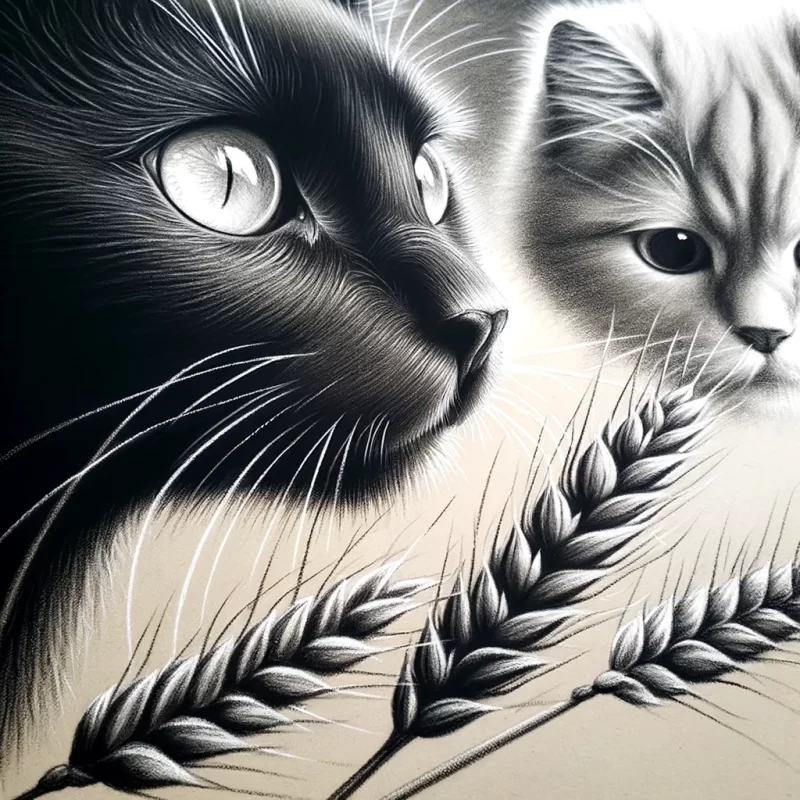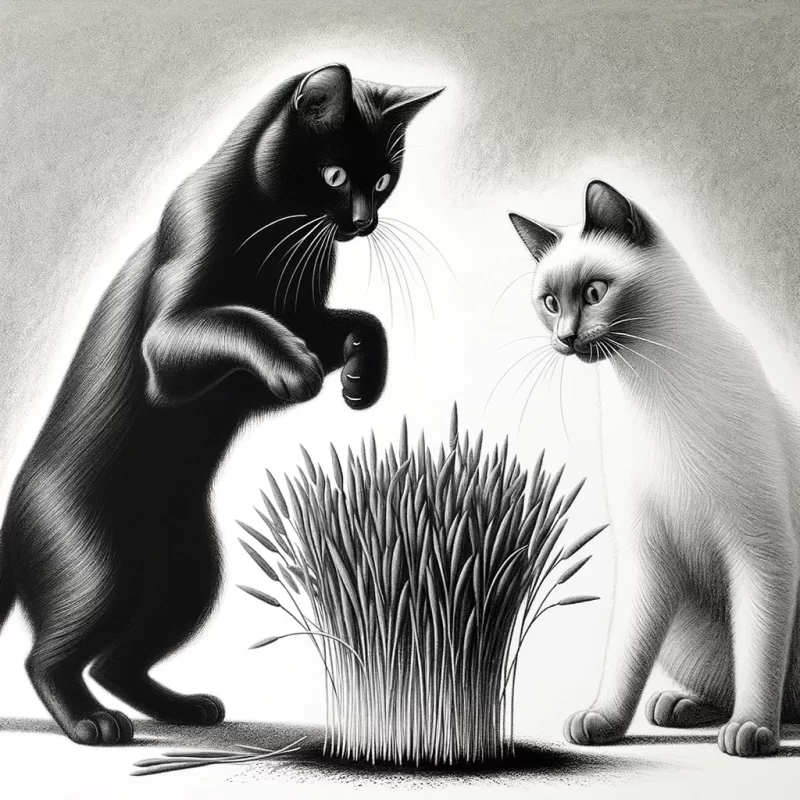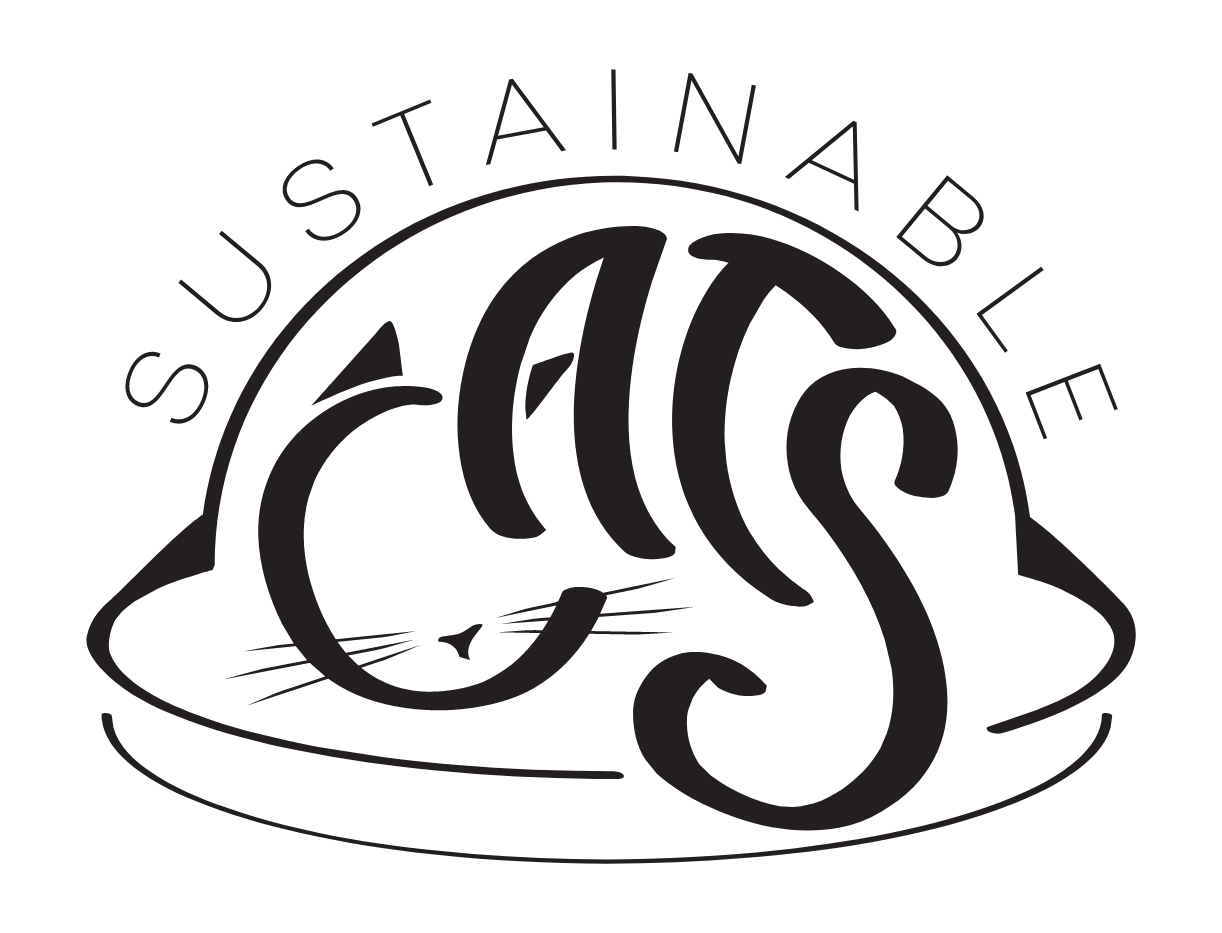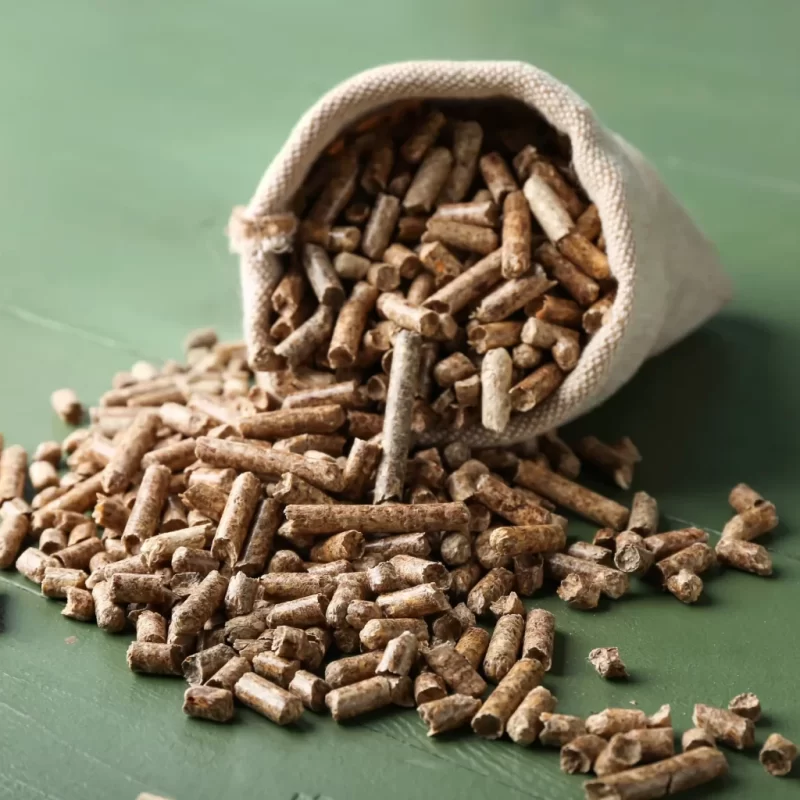Welcome to our comprehensive guide on wheat-based cat litter!
As a cat owner who values sustainability and your furry friend’s health, you must know you’ve come to the right place. This guide will explore the benefits of using wheat based cat litter and how it outperforms traditional clay litter. We’ll also provide valuable tips that you must know to choose the best one for your needs.
As a responsible cat owner, you must make eco-friendly choices that minimise your carbon footprint. It’s time to opt for wheat-based cat litter, which offers a sustainable and superior alternative to traditional clay litter. Clay litter is sourced from non-renewable resources, which harms the planet. By switching to wheat-based cat litter, you can contribute to a healthier planet and ensure your cat enjoys a clean and comfortable litter box environment.
Wheat-based cat litter is not only eco-friendly, but it also has several health benefits for your feline friend. Unlike clay litter, which may contain harmful chemicals and dust that can irritate your cat’s respiratory system, wheat-based litter is entirely natural and free from additives. Therefore, it is a safer and healthier option for cats with allergies or sensitivities.
This guide delves into the details of wheat-based cat litter, including its composition, clumping ability, odour control, and ease of use. It also addresses common concerns and misconceptions about wheat-based litter. By reading this guide, you will have all the information you need to make an informed decision whether you are a seasoned cat owner or a new cat parent.
This guide is an excellent resource for cat owners who want to switch to a more sustainable litter option or choose the best one for their cat’s health. So, let’s dive in and find out why wheat-based cat litter is the ideal choice for environmentally conscious cat owners.
What is wheat-based cat litter made from?
Wheat-based cat litter is manufactured from the dried remnants of wheat plants, commonly known as wheat straw. This byproduct of wheat production undergoes a thorough cleaning process to remove impurities. Then, it is pelleted, ground, and compressed into small pellet-like shapes to make wheat-based cat litter. The best part is that no additional chemicals or additives are required, as wheat straw is naturally absorbent and deodorising. Therefore, wheat-based cat litter is an eco-friendly and sustainable option for cat owners concerned about traditional cat litter’s environmental impact.
How does wheat-based cat litter compare to traditional clay litter?
Wheat-based litter is becoming increasingly popular as a sustainable option for environmentally conscious cat owners. Made from renewable resources such as wheat or other natural grains, it reduces the environmental impact of clay mining.
Wheat-based litter is not only sustainable but also biodegradable and compostable. Unlike clay litter, which takes hundreds of years to break down, wheat-based litter can be safely disposed of in compost bins or flushed down the toilet (if the product is labelled as flushable). This significantly reduces waste and contributes to a healthier environment.
In addition to its eco-friendliness, wheat-based litter also has natural odour-control properties. The wheat enzymes in the litter help neutralise unpleasant smells, keeping your home fresher and more pleasant. This means less frequent litter box cleaning and a more enjoyable living environment for you and your feline friend.
Wheat-based litter is also dust-free and healthier for cats and their owners. Clay litter often produces fine dust particles that can be inhaled, causing respiratory issues and allergies. In contrast, wheat-based litter minimises dust, reducing the risk of these health concerns.
Lastly, wheat-based litter is typically softer on your cat’s paws. The natural texture of the litter provides a more comfortable experience for your furry friend during their bathroom activities. This can be particularly beneficial for cats with sensitive paws or arthritis.
To summarise, wheat-based cat litter is a sustainable, biodegradable, and eco-friendly choice that offers natural odour control, reduced dust, and enhanced comfort for your feline companion. By switching to wheat-based litter, you can ensure a happier, healthier, and more enjoyable litter box experience for you and your beloved cat.
Is wheat-based cat litter safe for cats?
Wheat-based cat litter is a safe and eco-friendly alternative to traditional clay litter. Made from wheat byproducts, this type of litter is biodegradable, making it a sustainable choice for cat owners.
One of the critical benefits of wheat-based cat litter is its natural fast-clumping ability. When the litter comes into contact with liquid waste, it forms firm clumps that are easy to scoop and dispose of. This makes it convenient for cat owners and helps to keep the litter box fresh and clean.
Additionally, wheat-based cat litter is generally chemical-free, and artificial fragrances are virtually unscented, making it a safer option for cats with allergies or sensitivities. It is also dust-free, reducing the risk of respiratory issues in both cats and their people.
It is worth noting that some cats may prefer a specific type of litter, so it is important to monitor their behaviour and make adjustments accordingly. However, many cats transition easily to wheat-based litter; some even prefer its natural texture and odour.
Wheat-based cat litter provides a safe and sustainable option for cat owners looking for an environmentally friendly alternative. It is important to choose a high-quality brand and regularly clean the litter box to ensure the health and comfort of your feline companion.
Does wheat-based cat litter control odour effectively?
Wheat-based cat litter is a great option to control odour in your cat’s litter box. This type of litter is made of wheat, which has the natural properties of absorbing odour. Wheat particles in the litter trap and neutralise unpleasant odours, keeping your home smelling fresh.
One of the benefits of using wheat-based cat litter is that it eliminates odours without harsh chemicals or artificial fragrances, making it a safer option for your cat and the environment. Wheat litter is often biodegradable and can be safely disposed of in compost or as garden mulch.
Wheat-based cat litter is also clumpable, which makes it easier to clean and maintain your cat’s litter box—clumping litter forms tight clumps in contact with urine, making it easy to scoop out and dispose of. This helps keep the litter box clean and odour-free for more extended periods.
However, it’s important to note that every cat is different, and some cats may have specific preferences regarding litter. Introducing any new litter gradually and monitoring your cat’s response is always a good idea. If your cat shows any signs of discomfort or avoidance, trying a different type of litter may be necessary.
Wheat-based cat litter is an excellent choice for sustainable cat owners prioritising odour control and natural materials. Its effectiveness in controlling odour, clumpability, and eco-friendly properties make it a popular option for many cat owners.

How does wheat-based cat litter clump compared to other types of litter?
Wheat-based cat litter has unique clumping properties that set it apart from other types of litter. The clumping ability of wheat-based litter is derived from the natural starches present in wheat. These starches form tight and solid clumps when they come into contact with moisture, making it easier to scoop and remove soiled litter.
Compared to other types of litter, such as clay or silica-based litter, wheat-based litter tends to form more cohesive and robust clumps. This is advantageous for cat owners as it ensures the litter remains intact even when it scratches or digs in the litter box. The strong clumping action of wheat-based litter also helps minimise tracking and prevent the spread of odours, creating a cleaner and more pleasant environment for cats and their owners.
Moreover, wheat-based litter are generally more environmentally friendly than other types of litter. They are biodegradable and can be safely disposed of in compost or garden waste. This makes them an excellent option for sustainable cat owners prioritising eco-conscious choices.
However, it is important to note that the clumping ability of wheat-based litter can vary depending on the brand and formulation. Some wheat-based litters may clump more effectively than others, so choosing a reputable brand like sWheat Scoop with a proven track record of superior clumping performance is advisable.
In summary, wheat-based cat litter clumps exceptionally well due to the natural starches found in wheat. Its strong clumping action minimises tracking and odour, providing a cleaner litter box experience. Additionally, choosing a wheat-based litter can align with sustainable practices, as it is biodegradable and environmentally friendly.
Is wheat-based cat litter biodegradable?
Yes, wheat-based cat litter is biodegradable. It is made from natural wheat or wheat by-products, which break down and decompose naturally over time. When disposed of properly, wheat-based cat litter can undergo the process of biodegradation, where microorganisms in the environment break down the litter into simpler substances, reducing its impact on the planet. Biodegradable cat litter options, such as wheat-based litter, provide a sustainable alternative to traditional clay-based litter, offering environmental benefits and effective odour control for conscientious cat owners.
Can wheat-based cat litter be flushed down the toilet?
Flushing wheat-based cat litter down the toilet is not recommended. While wheat-based litter may be biodegradable, it can still cause issues when flushed. Wheat litter absorbs water and swells, which can lead to clogs in the plumbing system. Additionally, the clumping action of the litter can cause it to clump together and create blockages in the pipes. To avoid potential plumbing problems and environmental hazards, it is best to dispose of used wheat-based cat litter in the trash or compost it appropriately.
Does wheat-based cat litter track less than clay litter?
Yes, wheat-based cat litter does track less than clay litter. Wheat-based cat litter is made from renewable and biodegradable materials, such as wheat fibres, which are highly absorbent and form clumps when they come into contact with liquids. These clumps are less likely to break apart and scatter around your home, reducing tracking issues.
Unlike clay litter, which can be heavy and easily stick to your cat’s paws, wheat-based litter is lighter and has a smoother texture. This minimises the chances of it getting stuck to your cat’s fur and being carried outside the litter box. As a result, you’ll find fewer litter granules spread throughout your home, making cleanup easier and reducing the need for frequent vacuuming or sweeping.
Furthermore, wheat-based cat litter produces less dust than clay litter. Dust particles can become airborne and settle on furniture, floors, and other surfaces, creating a mess and potentially causing respiratory discomfort for cats and their owners. Choosing wheat-based litter can minimise dust-related issues and ensure a cleaner and healthier environment for you and your feline companion.
In summary, wheat-based cat litter offers several advantages over clay litter in terms of tracking. Its lightweight nature, smooth texture, and reduced dust production contribute to a cleaner home and a more enjoyable experience for you and your cat. Consider switching to wheat-based litter for a more sustainable and tracking-free litter solution.
Is wheat based cat litter dust-free?
Wheat-based cat litter is known for its numerous benefits, but when it comes to being dust-free, there are a few factors to consider. While wheat-based litter is generally regarded as low dust compared to traditional clay litter, it may still produce some dust particles.
The dustiness of wheat-based cat litter can depend on several factors, including the specific brand and formulation of the litter and individual user experiences. Some wheat-based litters have been specially designed to minimise dust by incorporating natural additives or processing techniques that reduce the amount of airborne particles.
It’s important to note that even minimal dust levels can vary depending on how the litter is handled and maintained. Proper storage, handling, and regular cleaning of the litter box can help minimise potential dust issues.
Suppose you or your cat have respiratory sensitivities or allergies. In that case, it may be wise to choose a litter specifically labelled as “low dust” or “dust-free” to ensure the health and comfort of your feline companion. Always read the product labels and seek guidance from your veterinarian if you have any concerns.
In summary, while wheat-based cat litter generally has lower dust levels than clay-based litter, it may still produce some dust particles. Choosing a specific brand or formulation labelled as “low dust” or “dust-free” can provide extra assurance for cat owners seeking a dust-free litter option.
How long does a bag of wheat based cat litter typically last?
The lifespan of a bag of wheat-based cat litter can vary depending on several factors. These factors include the number of cats you have, the bag size, and how often you clean the litter box.
A bag of wheat-based cat litter can last between 2 to 6 weeks. This estimate assumes you have one cat and clean the litter box daily. However, if you have multiple cats or don’t clean the litter box as frequently, the bag may only last for a short time.
It’s important to note that wheat-based cat litter has a higher absorption capacity than traditional clay litter. This means that it can often last longer before needing to be replaced. Additionally, wheat-based litter is known for its clumping properties, which can make scooping and cleaning the litter box easier and more efficient.
If you notice an increase in odour or the litter becomes saturated with urine, it’s time to change the litter. Regularly monitoring the condition of the litter will help ensure a clean and odour-free environment for your cat.
Remember, maintaining a proper litter box hygiene routine is essential for your cat’s health and well-being. Clean litter helps prevent the growth of bacteria and reduces the risk of urinary tract infections. Following the manufacturer’s guidelines and your cat’s individual needs will help determine how long a bag of wheat-based cat litter will typically last in your specific circumstances.
Does wheat based cat litter need to be changed as frequently as clay litter?
Wheat-based cat litter offers several benefits over clay litter, including its ability to absorb odours and clumps. However, when it comes to the frequency of litter changes, there are a few factors to consider.
Firstly, the specific brand and type of wheat-based litter can impact how often it needs to be changed. Some brands may have better absorbency than others, meaning they can last longer before needing to be replaced.
Secondly, the number of cats using the litter box and their habits can influence the frequency of litter changes. You may need to change the litter more often if you have multiple cats or a particularly messy cat.
Lastly, it’s essential to consider your cat’s preferences and hygiene. Some cats are more finicky and may refuse to use a dirty litter box, while others may tolerate it for more extended periods. Observing your cat’s behaviour and ensuring their litter box is cleaned regularly is crucial to maintaining comfort and hygiene.
Wheat-based cat litter may require less frequent changes than clay litter due to its superior absorption and clumping properties. However, monitoring the litter box regularly and changing the litter as needed is recommended to ensure a clean and odour-free environment for your feline companion.

Can wheat-based cat litter be used for multiple cats?
Yes, wheat-based cat litter can be used for multiple cats. Using wheat-based cat litter for multiple cats can be a good option. Wheat-based litter offers excellent absorption and clumping properties, making it suitable for households with numerous feline companions.
When using wheat-based litter for multiple cats, it’s essential to consider a few factors. Firstly, the litter box size should be appropriate to accommodate all the cats comfortably. Enough litter box space will help ensure each cat has access to a clean area.
Secondly, regular cleaning is essential when using wheat-based litter for multiple cats. More cats using the litter box may require frequent scooping and cleaning to maintain cleanliness and prevent odours. A consistent cleaning routine will help ensure that all cats have a clean and inviting litter box.
Additionally, monitoring the condition of the litter is essential. If urine or faeces accumulate quickly, or if there is an increase in odour, it may be necessary to change the litter more frequently to maintain a fresh and hygienic environment for all the cats.
Overall, wheat-based cat litter can be used successfully for multiple cats. However, it’s crucial to provide enough litter box space, maintain regular cleaning, and monitor the condition of the litter to ensure the comfort and well-being of all your feline companions.
What are the environmental benefits of using wheat based cat litter?
Wheat-based cat litter offers a range of environmental benefits that make it an excellent choice for sustainable cat owners.
- Biodegradable: One of the key environmental advantages of wheat-based cat litter is that it is biodegradable. As a natural material, it can break down quickly and safely, reducing the burden on landfills.
- Renewable resource: Wheat is a renewable resource that can be grown and harvested repeatedly without depleting the earth’s natural resources. Choosing a wheat-based cat litter helps to support sustainable farming practices.
- Reduced carbon footprint: Wheat-based cat litter typically has a lower carbon footprint than traditional clay-based litter. The production process for clay-based litter involves mining, processing, and transportation, all of which contribute to greenhouse gas emissions. You are choosing a more environmentally friendly option by opting for a wheat-based alternative.
- Natural and chemical-free: Wheat-based cat litter are often free from added chemicals and synthetic fragrances, making them safer for your cat and the environment. By avoiding harsh chemicals, you are reducing the potential for water and soil pollution.
- Low dust: Wheat-based litters tend to have lower dust levels than clay-based litters. This improves the air quality in your home and contributes to a healthier environment for you and your cat.
- Sustainable disposal: Wheat-based cat litter can often be safely flushed down the toilet, reducing landfill waste. However, checking with your local wastewater treatment facility is essential to ensure this is allowed in your area. By choosing wheat-based cat litter, you can enjoy the environmental benefits of a biodegradable, renewable, and low carbon footprint option while providing your cat with a safe and comfortable litter box experience.
How does the cost of wheat-based cat litter compare to other types of litter?
When comparing the cost of wheat-based cat litter to other types of litter, it is essential to consider several factors.
Firstly, the initial purchase price of wheat-based litter may be slightly higher than traditional clay or silica gel litter. However, it is crucial to remember that the cost is not the only aspect to consider in terms of overall value.
Wheat-based cat litter offers several advantages that make it a sustainable choice. Firstly, it is biodegradable and compostable, meaning it can be safely disposed of and will break down naturally over time, reducing environmental impact. This is a significant benefit for sustainability-conscious cat owners.
Additionally, wheat-based cat litter often forms clumps, making cleaning and maintaining a tidy litter box easier. This can extend the lifespan of the litter, potentially reducing the frequency of litter replacements and minimising ongoing costs in the long run.
Moreover, wheat-based litter is generally free from harmful chemicals, fragrances, and dyes, providing a safer and healthier option for cats and their owners. This may contribute to long-term cost savings by promoting better overall feline health and reducing potential veterinary expenses.
In summary, while the initial cost of wheat-based cat litter may be slightly higher, its sustainable attributes, clumping capabilities, and chemical-free composition make it a worthwhile investment for sustainable cat owners who prioritise their feline’s well-being and reduce their environmental impact.
Can wheat-based cat litter be used for kittens or senior cats?
Yes, wheat-based cat litter can be used for both kittens and senior cats.
Kittens have more delicate respiratory systems, and wheat-based litter is an excellent option because it is typically free from additives and chemicals. It is also softer and gentler on their paws, making it more comfortable for them to use.
For senior cats, wheat-based litter is beneficial as well. As cats age, they may develop arthritis or other joint issues, making digging and covering their waste in traditional clay litter harder. Wheat-based litter is lightweight and more manageable for senior cats to manoeuvre, reducing the strain on their joints.
Additionally, wheat-based cat litter is biodegradable and eco-friendly. It is made from renewable resources, such as wheat by-products, which helps reduce the environmental impact of traditional clay litter.
However, it’s essential to monitor your cat’s response to the litter and ensure they are not allergic or sensitive to wheat. If you notice any discomfort or adverse reactions, it’s best to switch to an alternative litter option and consult your veterinarian for further guidance.
How does wheat-based cat litter perform in terms of absorbing liquid?
Wheat-based cat litter is highly efficient in absorbing liquid. Due to its natural composition, wheat-based litter has excellent absorbency capabilities, allowing it to soak up moisture and lock it away quickly. This is particularly beneficial for cat owners as it helps to control odours and keeps the litter box fresh.
The absorbent nature of wheat-based cat litter stems from the unique properties of wheat. Wheat litter particles have a porous structure that rapidly absorbs liquid, whether urine or spilt water. The absorbency of wheat litter helps to minimise liquid pooling and prevents it from reaching the bottom of the litter box.
Moreover, the absorbent nature of wheat-based litter also helps in clumping. When the litter comes into contact with liquid, it forms tight clumps that are easy to scoop out, facilitating hassle-free cleaning of the litter box. These clumps prevent the spread of moisture within the litter, ensuring the surrounding litter remains dry and fresh.
Another advantage of wheat-based cat litter is its ability to retain liquid without releasing it back into the environment. The litter particles’ absorbency helps trap and hold the liquid securely until it is removed during cleaning. This feature helps maintain a cleaner litter box and prevents moisture from seeping into the floor or cat’s paws.
In summary, wheat-based cat litter excels in terms of liquid absorption. It’s natural composition, and porous structure enables it to swiftly absorb liquid, form clumps, and retain moisture, providing a more hygienic and comfortable environment for both cats and their owners.
Time to Make the Sustainable Choice for Your Feline Friends!
Throughout this blog post, we have explored the benefits of wheat-based cat litter for sustainable and health-conscious cat owners. We have discussed how this eco-friendly alternative reduces the carbon footprint and promotes your furry companion’s well-being.
Firstly, we highlighted the environmental advantages of wheat-based cat litter. By opting for this natural and biodegradable option, you can contribute to reducing the amount of non-biodegradable waste in landfills. Additionally, wheat-based litter is often produced using sustainable farming practices, making it an excellent choice for those prioritising eco-consciousness.
Secondly, we delved into the health benefits of wheat-based cat litter. Unlike traditional clay litter, wheat-based litter is free from harmful chemicals and additives that can harm your cat’s respiratory system. Its natural composition also minimises the risk of allergies and skin irritations, ensuring your feline friend’s healthier and happier living environment.
In conclusion, choosing wheat-based cat litter is a win-win situation for the environment and your cat’s well-being. By making this sustainable choice, you actively contribute to a greener future while providing a safer and healthier litter option for your furry companion.
Take Action Today!
Join the growing community of sustainable cat owners by switching to wheat-based cat litter. Not only will you be positively impacting the environment, but you will also be prioritising the health and comfort of your beloved feline friend. Make the switch today and experience the benefits of this eco-friendly and cat-friendly choice.
Remember, every small step towards sustainability counts. We can create a better world for our cats and future generations.












2 thoughts on “Wheat Based Cat Litter: A Green Choice for Your Feline Companion”